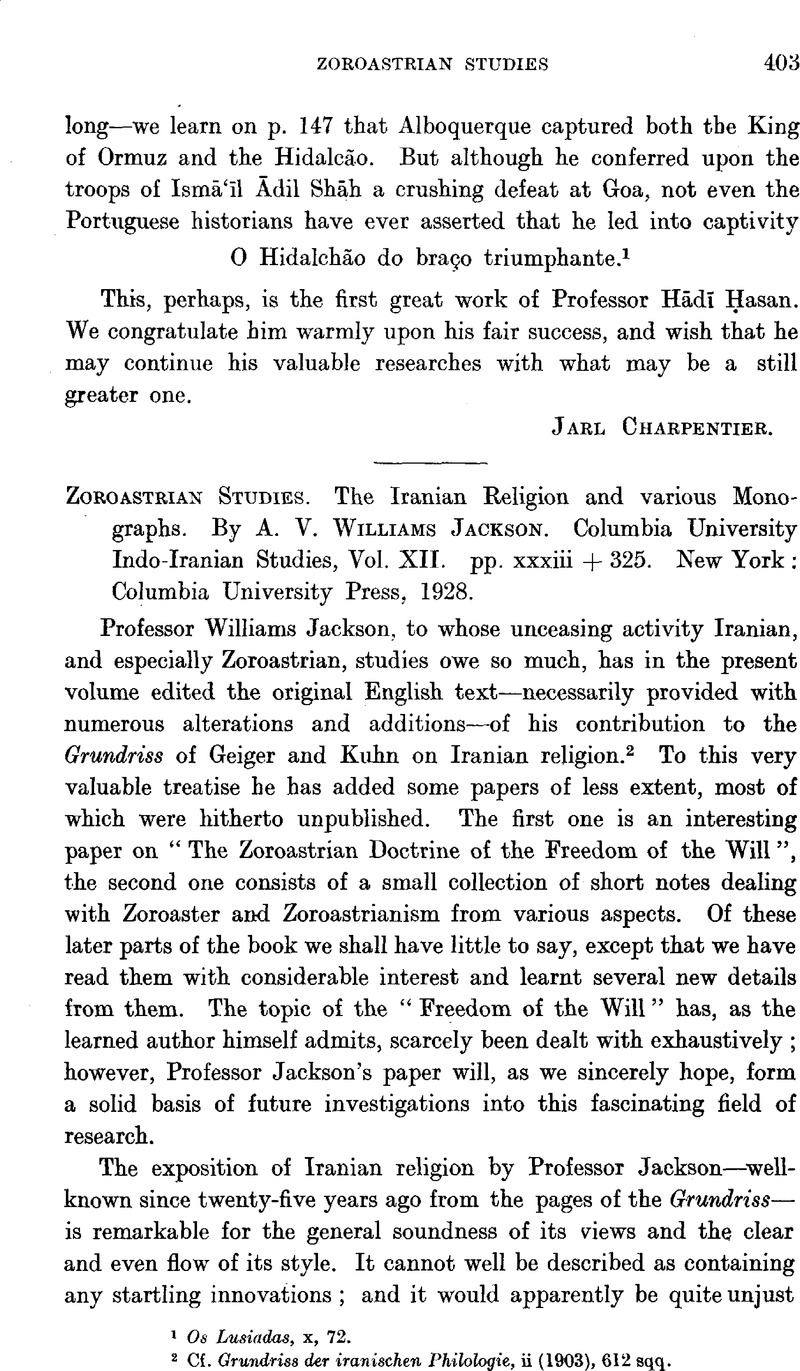No CrossRef data available.
Published online by Cambridge University Press: 24 December 2009

page 403 note 1 0s Lusiadas, 10, 72.Google Scholar
page 403 note 2 Cf. Grundriss der iranischen Philologie, 2 (1903), 612 sqq.Google Scholar
page 404 note 1 As for the name Zaraθuštra it is, of course, still unclear (cf. p. 247 sq.) though I have personally no doubt that it means something like “ the old camel ” or “ possessor of old camels ”. It is somewhat curious that the form ZωpoáσTpηs, which is undoubtedly the oldest transcription that we possess, gives no evidence for the doubtful internal -θ-.
page 404 note 2 Trois conférences sur les Gāthā de I’Avesta, faites à l’Université d’Upsal. Paris, 1925.Google Scholar
page 404 note 3 I.H.Q., 1, 4 sqq.Google Scholar
page 404 note 4 Zeitschrift f00FC;r Missionskunde and Religionswissenschaft, vol. 40, p. 45 sqq.Google Scholar
page 406 note 1 On Varuṇa, cf. the interesting, but highly uneven and confused, work by Professor Güntert called Der arische Weltkönig und Heiland (1923); G. undoubtedly has advanced some rather striking ideas, but he is seriously hampered by his ignorance of everything Indian.
page 407 note 1 Cf. this Bulletin, 4, 147 sqq.Google Scholar
page 407 note 2 cf.Jackson, , p. 49.Google Scholar
page 407 note 3 cf.Wackernagel, , Festschrift E. Kuhn, p. 161 n.Google Scholar; Güntert, , Kalypso, p. 259 sqq.Google Scholar; Thurneysen, , Indogerm. Forsch., 52, 143 sqq., etc.Google Scholar
page 407 note 4 Cf. however, Flügel, , Mani seine Lehre und seine Schriften, p. 119 sq.Google Scholar
page 407 note 5 Cf. also Labourt, , Le Christianisme dans L’Empire Perse, p. 43.Google Scholar